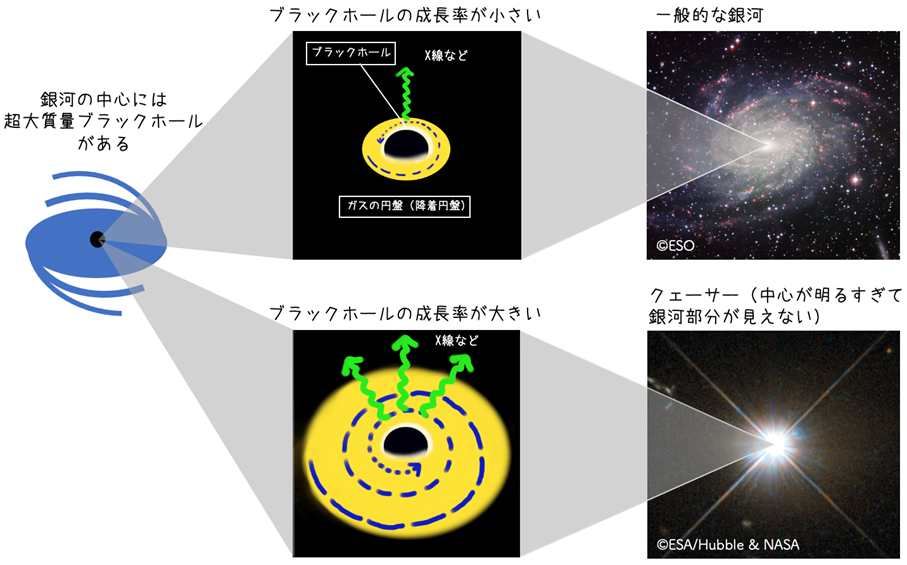DATE2024.03.09 #Press Releases
While galaxies were hard at work forming stars, black holes were resting...
~A surprising relationship between galaxies and black holes in the universe more than 12 billion years old~
School of Science, The University of Tokyo
Summary of Presentations
A research group from the Department of Astronomy, Graduate School of Science, The University of Tokyo, consisting of graduate student Suin Matsui, associate professor Kazuhiro Shimasaku, research fellows Kei Ito and Makoto Ando, and graduate student Takumi S. Tanaka, has, for the first time, revealed that the mass increase rate of supermassive black holes (Fig. 1) located at the centers of general galaxies over 12 billion years old was significantly lower than expected. This finding was made by analyzing X-ray images of more than 10,000 galaxies discovered by the Subaru Telescope.
Using the X-ray stacking technique, which increases the signal-to-noise ratio by superimposing a large number of X-ray images of galaxy positions, this study estimated the mass increase rate of supermassive black holes located at the centers of general galaxies as far back as about 12-13 billion years ago. In the present-day universe, there is a roughly linear relationship between the mass of galaxies and the mass of their black holes. If black holes at that time had been growing in lockstep with their galaxies according to this relationship, they would have been detectable in X-rays by stacking numerous galaxies, as in this study. However, the results were surprisingly undetectable. Instead, the research found that the upper limits on the mass increase rate were significantly lower, by more than an order of magnitude, than anticipated for the lockstep growth scenario. This implies that while galaxies were growing by actively forming stars, their black holes were close to dormant. This discovery suggests that unless ancient black holes experienced a quasar-like phase, with a rapid mass increase over a brief period, they would never reach the masses observed in the present-day universe. This finding provides a powerful clue to understanding black hole growth and forces modifications to the evolutionary model of galaxies and black holes.
These results were published in the online edition of the Monthly Notices of the Royal Astronomical Society on 9 March.

Figure: Galaxies and supermassive black holes.
Journals
-
Journal name Monthly Notices of the Royal Astronomical SocietyTitle of paper


